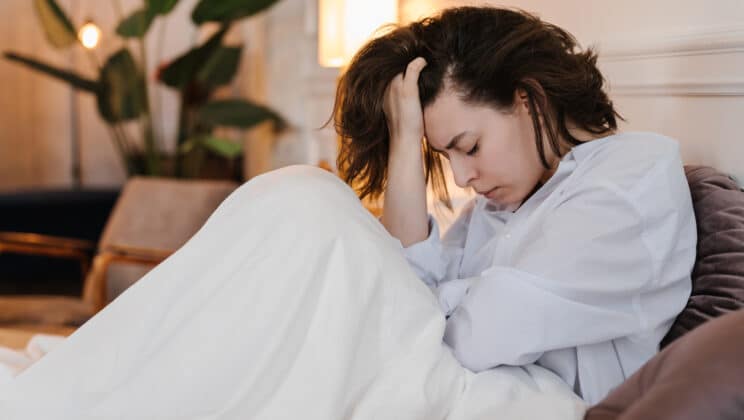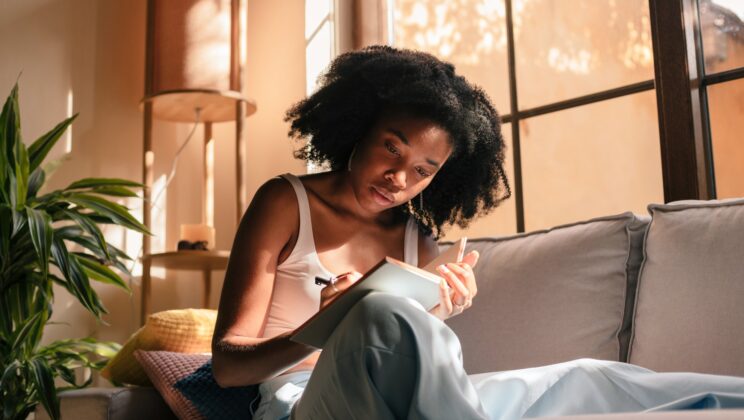Getting Better Sleep
October 19, 2018
Your boss gives you a last-minute project, and you have to work into the evening to get it done. You get to bed later than usual but have difficulty falling asleep because your mind won’t let the project go. You toss and turn until you finally fall asleep. Then, because you’re extra tired the next morning, you hit snooze multiple times. To make it through the day, you ingest twice your normal dose of caffeine and then grab a quick nap at 5 PM when you get home.
All of these behaviors make sense. After all, you’re exhausted. But lying awake in bed, hitting snooze, using extra caffeine, and napping late in the day could all contribute to further nights of difficulty sleeping. Though they might help with your sleepiness and fatigue in the short term, they can disrupt your sleep cycle and lead to bouts of insomnia.
If you learn how sleep works and engage in good sleep practices, you may be able to prevent a night of bad sleep from spiraling into several nights staring at the clock, wondering when sleep will come. You can also improve the sleep you’re already getting, so that you’re more likely to wake up refreshed and ready to meet the day.
How Sleep Works
Sleep is regulated by two biological systems: your internal body clock and your sleep drive. Your internal body clock tells you what time to wake up and what time to go to sleep. It sends you alerting signals throughout the day and tapers off when it’s time for bed. The alerting signals return shortly before you wake up.
Your sleep drive builds up your appetite to sleep from the moment you wake up to the moment you go to bed. When the alerting signals from your internal body clock decrease, your sleep drive takes over and puts you to sleep.
Occasional sleeplessness is normal: something exciting or stressful occurs, and you can’t wind your mind and body down by your regular bedtime. But if you avoid engaging in counterproductive behaviors like the ones described above, you can quickly get back on track and return to a normal sleep pattern.
Improving Your Sleep Hygiene
Luckily, there are a variety of tried-and-true “sleep hygiene” practices you can use to get out of your own way and sleep more soundly, even when you occasionally have a night of sleeplessness. Think of these practices as suggestions to experiment with, not hard and fast rules. Everyone is different, and one strategy might have a greater effect on one person than another.
Maintain a regular sleep schedule
Go to bed and get up at roughly the same time every day. Don’t change your bedtime or wake up time by more than about 45 minutes. If you go to bed late or don’t sleep well, try to get up close to your usual time the next day. This will prevent you from interfering with your body clock and sleep drive.
Have a brisk wake up
Limit snoozing and get up quickly. Snoozing may diminish your sleep drive, making you less ready for sleep at bedtime. Also, make sure to get natural light within one hour of waking. This reinforces your internal body clock.
Limit napping
Napping diminishes your sleep drive. It’s like snacking between meals. If you have to nap, sleep no longer than 20-30 minutes, and do it early in the afternoon.
Limit alcohol and other substances
Alcohol may make you feel sleepy, but it makes you sleep less soundly. Therefore, stop drinking 2-3 hours before bedtime.
Limit caffeine
Caffeine has a half-life about 4-5 hours. That means that if you have a cup of coffee at 5 PM, your body is still metabolizing half of it 4-5 hours later. It’s hard for your sleep drive to compete with that.
Create a bedtime buffer zone
Dim ambient light about one hour before bedtime. This encourages the release of the hormone melatonin, which makes you sleepy. h3 off devices, too. They have too much light and can be unnecessarily stimulating.
Limit behavior in bed to sleep and sex
Did you know that you can inadvertently teach yourself to be awake while you are in bed? It’s theorized that this happens through classical conditioning, the same process that taught Pavlov’s dogs to salivate at the sound of a bell. By frequently pairing being awake with being in bed, you teach your body that being in bed means being awake. If you find yourself lying awake for many hours at a time, you should consider keeping activities besides sleep and sex out of the bedroom. Tossing and turning? Get up after 20 minutes and do something boring or relaxing until you feel sleepy again.
Don’t “try” to go to sleep
Trying to sleep is like trying to fall in love. There’s just no way to do it. And trying to fall asleep just makes you more awake. Get up and do something boring or relaxing until you feel sleepy again.
Don’t stress about sleep
People usually overestimate the effects of one night of bad sleep. Start with the assumption that you will be fine. If you get one bad night of sleep, don’t try to compensate. Go to bed and get up at the regular time the next day. Remember to let your sleep drive and internal body clock do their jobs.
Next steps
If practicing good sleep hygiene doesn’t do the trick for you, and you’re still struggling with regular sleeping difficulties, it might be time to consult a cognitive behavioral therapist. Cognitive behavioral therapy for insomnia (CBT-I) is a behavioral treatment that has been shown to be effective in multiple studies. It involves tracking your sleep habits, countering misperceptions that lead to excessive stress about sleep, and helping you re-regulate your sleep schedule.
Seeing a licensed mental health professional might also be useful if poor sleep is related to a mental health problem. Disrupted sleep can be a symptom or consequence of depression, anxiety, bipolar disorder, and other conditions. Resolving or stabilizing these conditions often resolves a concurrent sleep problem.
Finally, there are a few symptoms you should watch out for that might indicate a medical problem that needs to be addressed by a doctor. These include snoring, snorting, and gasping for air, which might be a sign of sleep apnea; frequently moving or kicking your legs during the night, which may indicate periodic limb movement disorder; uncomfortable sensations in your limbs with a strong urge to move them, which might be a sign of restless leg syndrome; and sleeping perfectly well, but only outside of normal hours, which might indicate a circadian rhythm disorder.
Sources
Ehrnstrom, C., & Brosse, A. L. (2016). End the insomnia struggle: A step-by-step guide to help you get to sleep and stay asleep. Oakland, CA: New Harbinger.
Manber, R., Friedman, L., Siebern, A. T., Carney, C., Edinger, J., Epstein, D., Haynes, P., Pigeon, W., & Karlin, B. E., (2014). Cognitive behavioral therapy for insomnia in veterans:: Therapist manual. Washington, DC: U.S. Department of Veterans Affairs.
Perlis, M. L., Jungquist, C., Smith, M. T., & Posner, D. (2008). Cognitive behavioral treatment of insomnia: A session by session guide. New York: Springer.
CONTACT US
If you need support, Lyra can connect you to a behavioral health solution. You can get started today if Lyra is offered by your employer. Sign up now.
And check in frequently here or follow us on Facebook, LinkedIn, and Twitter for more insights into optimal well-being.
DISCLAIMER
The content of this blog is not intended to be a substitute for professional medical advice, diagnosis, or treatment.
ABOUT THE AUTHOR
Matthew S. Boone, LCSW is the Creative Director of Clinical Content at Lyra Health. He is a nationally recognized trainer in acceptance and commitment therapy (ACT) and the editor of the book Mindfulness and Acceptance in Social Work.
Author
The Lyra Team
The Lyra Team is made up of clinicians, writers, and experts who are passionate about mental health and workplace well-being. With backgrounds in clinical psychology, journalism, content strategy, and product marketing, we create research-backed content to help individuals and organizations improve workforce mental health.
Explore additional blogs

Mental health tips
Caregiver Burnout: How to Find Peace in the Chaos

Mental health tips
How to Parent a Child With ADHD

Mental health tips